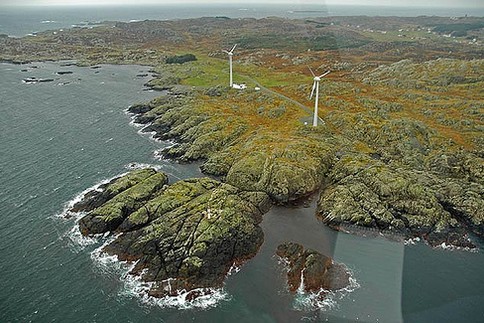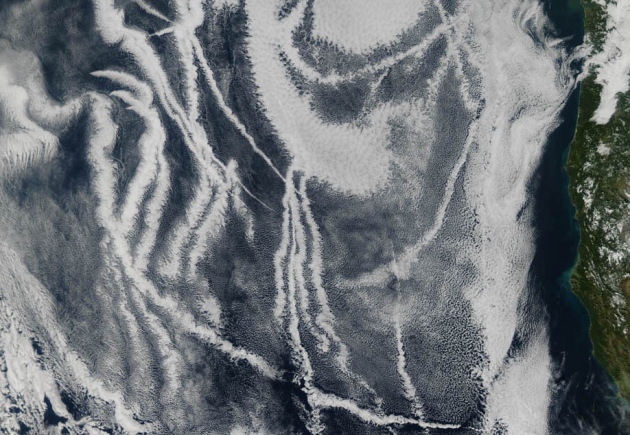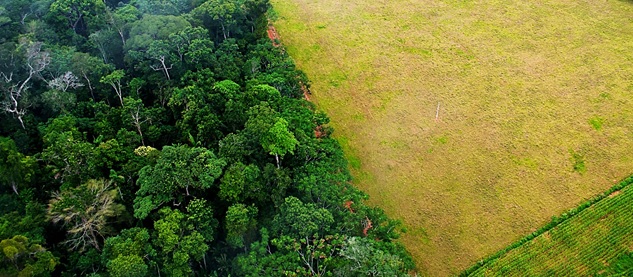
I write a considerable amount about climate change. Why? Because I consider it and runaway human population growth to be the two most significant negative impactors in the 21st century. This week some of us here on Earth once more brought up the topic of geo-engineering our way out of climate change. While another report pointed to the potential climate change consequences of putting more land into agricultural production. And finally a government in Europe, Norway, took leadership to commit to carbon reductions in dramatic fashion.
Climate Engineering Rears its Head Once Again
Having our cake and eating it too is what geo-engineering is all about. There are scientists and engineers who seriously believe we can manipulate global climate through technology. After all, haven’t we been seeding clouds to create rain since the mid-19th century? So what’s the difference?
Summoning rain is easy when compared to trying to manipulate the climate of an entire planet. To create rain seed an existing cloud with silver iodide or calcium chloride crystals, catch the cloud updraft and wait for the crystals to attract the water vapour to form ice. When the ice gets heavy enough it falls and as the air warms turns to rain.The science is far from exact as are the results.
The Chinese are probably the most diligent rainmakers on the planet with an arsenal of rockets, artillery shells and a fleet of airplanes dedicated to creating rain or dissipating the heavy industrial smogs from coal-fired power plants that ring their cities. The Chinese believe they have produced 500 billion additional tons of rain each year this way, a 3 to 5% increase over what would occur without seeding.
But the introduction of silver iodide for seeding is considered by environmentalists to be a toxin. Not that much of the stuff gets put into the environment, but nonetheless, the issue of putting materials into the air not normally there points to the whole problem of geo-engineering even when dealing with small scale-stuff like cloud seeding. That’s because there may be unforeseen and unintended consequences.
In Naomi Oreskes‘ and Erik Conway‘s recent book, “The Collapse of Western Civilization: A View From Our Future” , geo-engineering’s unintended consequences are very much in play in describing the fictional collapse of the world of the 21st century. The narrative describes a desperate stab at geo-engineering at mid-century using aerosol injection into the stratosphere of submicrometer-sized sulfate particles. The unintended consequences, a few years into the project, the collapse of the Indian Ocean monsoon and mass starvation in South Asia.
That’s the fear of using technology on a global scale to try and offset the carbon dioxide and methane along with other greenhouse gases that our modern industrial society emits. Yet a number of scientists and engineers are convinced that geo-engineering is very much needed to save the planet from warming temperatures caused by those greenhouse gases. According to them we should be investing in small-scale outdoor experiments to provide data to validate climate engineering as a solution. Even the United Nations Convention on Biological Diversity has endorsed developing such experiments. In the February 4th, 2015 edition of the online journal, Nature: International Weekly Journal of Science, they speculate on the kind of experimental projects needed to prove that geo-engineering could work.
Yet we’ve already seen the opening act. Back in 2012 an American businessman, Russ George, tried his own unauthorized experiment off the British Columbia coast dumping 100 tons of iron sulphate into the ocean and producing an algae bloom covering more than 10,000 square kilometers (3,861 square miles). The theory he proposed was that algae produced in the iron-enriched water would take carbon dioxide out reducing acidity and increasing the capacity of the ocean to absorb more of the greenhouse gas. What he could not foresee in such a small experiment is the potential consequences such as loss of biodiversity in the water column with dying algae depleting the oxygen leading to dead zones.
The picture below demonstrates how ships on the ocean surface could be mobile casino used to pump sulfate particles into the atmosphere to reduce the amount of sunlight striking the Earth and therefore lower temperatures. This is one of many ideas proposed by geo-engineers and I fear a potential Pandora’s box.

Going Vegan May Not Help Combat Climate Change
A new study states that agriculture during the past decade is overtaking deforestation as a leading source ofgreenhouse gas emissions. The study compares the contribution of forest cutting and loss of carbon sink with the consequences of deforestation, the use of the cleared land for agricultural pursuits. It states that the indirect climate impacts of this change in land use is greater than the loss of carbon sink from deforestation. Part of the calculation looks at the post-processing of forest products and the greenhouse gas contributions made by wood and pulp producers.
The study acknowledges that agricultural livestock represents the biggest contributor to greenhouse gases. So Vegans can gain some satisfaction from this. But in the effort to satisfy the growing demand for food because of human population growth the study shows increased greenhouse gas emissions from rice paddies and application of fertilizers. Since 1990 total greenhouse gas emissions from the agricultural sector have grown by 13%.
In the image below, a field has been clear cut in the Brazilian rainforest with the land subsequently devoted to both the raising of livestock and the growing of staple crops. This is a trend that will continue to grow as our world human population exceeds 9.5 billion by 2050 based on current projections.

Norway Committed to 40% Cut in Greenhouse Gas Emissions by 2030
It is not a big country but it is a fossil fuel giant in Europe. So how is Norway, a producer of both oil and gas, going to meet a pledge to cut greenhouse gases by 40%? The country of 5.1 million intends to do this partially by using the European Union carbon trading market to allow it to buy credits to offset the amount of greenhouse gas its fossil fuel industry produceses. In addition, however, Norway intends to build a strong base of renewable energy projects.
Already a large producer of hydroelectric power, the state-owned power company, Statkraft AS, plans to spend 60 billion kroner ($8.1 billion) in renewable energy projects domestically and around the world. Projects will be a mix of hydroelectric and windpower. Many of the wind projects will be domestic but overseas Norway plans include a combination of hydro and wind in places like India, Peru and Brazil.
For many environmentalists the Norwegian commitment falls short of what they believe the country can achieve through its own domestic efforts. They think the number can be closer to 70%. But Norway intends to make its 40% reduction commitment binding under the forthcoming climate change conference to be held in Paris this year.
Originally published by 21stcentech.com.



